10 Rules for Better Golf Scores
This August will mark nine years of Plugged In Golf. Add that to several years of teaching and writing elsewhere and you have a pretty healthy amount of words written and spoken about how to improve your game. In this lesson, I’m aiming to distill all that down to the ten things I think are most important. In short, if you adhere strictly to these ten rules, you will shoot lower scores. If you prefer listening to reading, I have this lesson in podcast form HERE.
Before I get into the list, I have two caveats.
First, most of these are things you can do for free, but a couple do cost money. I wish golf was free, but unfortunately that’s not the world we live in. If you want to score your best, there is going to be a financial investment.
Second, this list is for those who view their score as the #1 priority. Score does not have to be your top priority. It hasn’t been mine for over a decade. If score is not your priority, you can still read this list and maybe there’s something for you, maybe there isn’t. But if lower scores are your number one goal, these items are not negotiable. Don’t want to do them? That’s fine, but don’t tell me that lower scores are your priority. That’s loading your plate with cake and telling me that you want to lose weight.
Onward.
#1 – Thou Shalt Shot Track
You can’t fix a problem that you don’t understand, and, if you’re not shot tracking, you don’t understand your game as well as you can.
It’s 2022. Shot tracking technology is affordable and widely available on a number of platforms. I think Shot Scope [review HERE] is the best, but you can use Arccos [review HERE] or Garmin or any one of the apps out there. But you need to shot track.
Why do you need to shot track? Because it’s the fastest way to learn the most about your game. Scorecard stats don’t begin to compare to shot tracking. If you think you know your game, just wait until you shot track for a few rounds.
This depth of knowledge is invaluable in shaping your strategy on the course and your practice habits. With Shot Scope, for example, you can see your Strokes Gained stats compared to players of different handicap levels. If you’re trying to move from a 15 to a 10 handicap, you can see exactly where you’re losing those five strokes.
A final word on shot tracking: you need to give it time. One round is not an adequate sample size from which to draw conclusions. Log at least five, preferably ten, rounds before you start diving deep into the data.
#2 – Thou Shalt Stop Flag Hunting
Greens in Regulation is the king of stats [full discussion of that HERE]. It is the stat most strongly correlated to score, for obvious reasons. If you’re on the green in regulation, you might make birdie, and it’s hard to make worse than bogey. So how do we hit more greens in reg? Stop aiming at flags.
First, understand that your dispersion with any club is more like a shotgun than a sniper rifle (hat tip to Scott Fawcett). You are going to miss long, short, left, and right. Knowing this, you should aim at a target that puts all or most of the possible outcomes on the green. When you aim at flags that are on the edges of the green, you’re doing the opposite [more on this HERE].
To this end, you might also consider trading your rangefinder for a GPS. I love my rangefinder, but I know that it gets me focused on the yardage to the flag instead of the distance to the center of the green. When I play with a GPS, I hit more greens in reg because that center of the green yardage gives me margin for error.
#3 – Thou Shalt Know Thine Distances and Play Accordingly
If you’re going to score well, you need to know how far each club actually goes. Not how far it went that one time when you flushed it and it bounced off the cart path – how far it actually goes, on average. And then you need to play those distances on the course.
To gain this information, you can use a shot tracker or a launch monitor. Both are useful in their own way, and using both is a great idea.
With shot tracking, you’re going to get the measurements of the actual shots you hit on the course. Shot Scope puts all your clubs’ distances on one screen with something called “Performance Average” which removes the outliers for a truer representation of each club. The downside is that it will take a lot of rounds to get enough shots with each club.
If you use a launch monitor, you can get a lot of swings with each club in a much shorter amount of time. You’ll also get the full data on each shot. The only drawback here is that you need to be honest with yourself about what the data says. Far too many golfers will skim over the ten shots they hit, pick out the longest, and say, “Yup, my 7I goes 170 yards.” If you’re going to use a launch monitor, you need to look at the mean/average or median distance. You can also use this as an opportunity to see how often you strike each club well. If your 3I session was eight chunks and two balls hit 210 yards, it might be time to take that out of the bag. I have a full lesson on using a launch monitor to learn about your game HERE.
Once you have all this information, you need to use it on the course. Stop talking yourself into – or letting others talk you into – taking less club than you need. Pick the club with an average distance that will get you to the middle of the green.
#4 – Thou Shalt Hit Driver
Now we’re on to a fun rule: you should hit driver more often.
Why? On average, golfers across handicap levels hit their driver 20 yards longer than their 3W. If your 3W and driver go the same distance, you need to get a driver fitting to address that…now. When golfers hit 3W, they are giving up 20 yards to hit 1% more fairways. That is a horrible trade. 20 yards less means hitting 6I instead of 8I. That’s a recipe for higher scores regardless of handicap.
Finally, to preempt the stupid comments: no, you should not hit driver when doing so will land in a hazard or OB. However, unless there is a strong reason (read: stroke hazard) not to, you should be hitting driver.
Get the full Golf Myths Unplugged breakdown on hitting more driver HERE.
#5 – Thou Shalt Stop Laying Up
If you asked someone who had never played golf if it’s easier to hole out from 50 yards or 100 yards, they would say 50 yards. Only golfers would concoct nonsense explanations of why laying up to “magic” yardages is better than getting close. Thankfully, in 2022 we have the data to show that closer is better. Whenever you have the chance to get closer to the green, do it.
Again, to preempt stupid comments: no one is advocating hitting it into hazards. Similarly, no one is advocating hitting clubs that you skull nine times out of ten – though I would strongly advocate taking such a club out of your bag.
Get the full Golf Myths Unplugged story on going for the green HERE.
#6 – Thou Shalt Practice Thine Putting Speed
One of the hardest things to accept about golf is that you can’t force the ball into the hole. The best players in the world – with all the money on the line, all their hours of practice and talent, and all their laser focus – only make about half their putts from five to ten feet.
With this in mind, the best way for us to save strokes on the green isn’t trying to make more putts but to avoid three putts. To avoid three putts, we need to become masters of speed control.
Think about your local putting green. Everyone is practicing ten footers, no one is working on thirty footers. Be smarter than they are. If you can develop a reliable thirty-foot stroke, you will have so much less stress on your game. Every GIR is going to feel like a guaranteed par. And, with superior speed control, more of those long putts are going to find the bottom of the cup.
#7 – Thou Shalt Know Thine Gear
It’s nearly impossible to play good golf if you don’t know your gear. That starts with the basics of knowing your yardages, but it goes beyond that to things like how each club performs on certain misses, shot shape tendencies, and how the ball lands.
The only way to develop this knowledge of your set is to stick with your clubs for numerous rounds. If you’re constantly remaking your bag, there’s no way to know how much your 8I tends to draw or where the big miss is with your 3W. Playing with new clubs is fun, but if scoring is your priority, you need to pick a set and stick with it.
Beyond keeping the same clubs in the bag, you need to commit to one golf ball. I know this is painful. When we find a quality ball, we want to play it. When we get a dozen for Father’s Day, we want to use them. But, if you want to score your best, you need to know the tendencies of your ball just like you know the tendencies of your clubs. When you hit a chip, does it stick or roll out? How does it feel off the putter? Constantly changing your ball makes it more difficult to play good, consistent golf.
#8 – Thou Shalt Play Thine Own Game
We’ve already established the outline for a smart game plan: playing for GIRs, knowing your yardages, hitting driver, and not laying up. Now you need to stick to it.
Golf is loaded with temptations that try to draw you away from your plan. Your playing partners will goad you into taking less club. One bad swing will make you question the wisdom of hitting driver. A scary looking hazard will keep you from going for the green. A small gap in the trees begs you to “get it all back” after a bad drive. Don’t be swayed. Play your game.
Consider this: you’ve had a bad putting round. Did you start putting with your wedge? Of course not. Why? Because using the putter is the smart play. The same applies to hitting driver off the tee. Even when it’s not working, it’s the right play. Stick to it.
#9 – Thou Shalt Do Thine Homework
In 2022, golfers have a wealth of options for gaining course knowledge. In spite of this, most players choose to learn only from the school of hard knocks. Be smarter than those people.
If you’re playing a new course, check it out in advance. Even if it’s a course you’ve played before, get a refresher. You can use Google Earth, the course’s website, a GPS app, or a yardage book. As trite as many of the hole descriptions can be on golf course website, they often reveal great info like the hazard you can’t see from the tee or the lake behind the green. Picking up tips like that can save you multiple strokes. This is also one of the few tips that can save more strokes for the stronger player, as many of the hidden hazards are more treacherous for them.
#10 – Thou Shalt Give Every Shot Complete Focus
As obvious as this seems, I guarantee that everyone reading this gives up at least one shot a round due to poor focus. Sometimes this is the result of fatigue. Concentrating on every shot is hard, and we can space out and make a bad swing. Sometimes it’s emotional. We miss a putt or get a bad break, rush into the next shot, and throw away a stroke (or more).
If the score is your top priority, every single stroke matters. Develop a bulletproof pre-shot routine that locks in your focus. More importantly, never give up on a round, a hole, or a shot. Embrace that you – not the weather, not the pace of play, not the course conditions – are responsible for every swing. Know that every swing is a chance to do something great and give it your full concentration. This alone can have a tremendous impact on your scores and the way you play the game.
He founded Plugged In Golf in 2013 with the goal of helping all golfers play better and enjoy the game more.
Matt lives in the northwest suburbs of Chicago with his wife and two daughters.
- Performance Golf Click Stick Training Aid Review - October 18, 2024
- Callaway Opus Platinum Wedge Review - October 17, 2024
- When to Take a Break from Golf - October 15, 2024


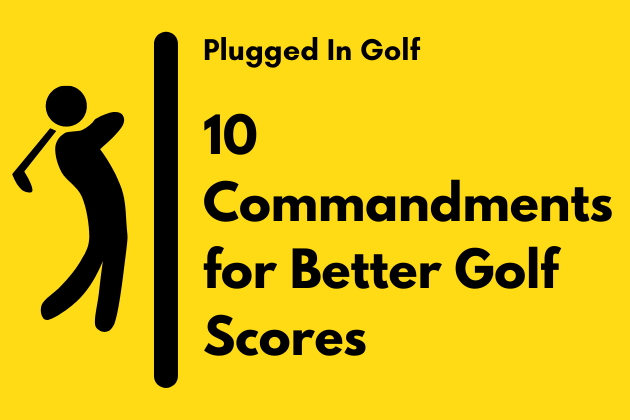
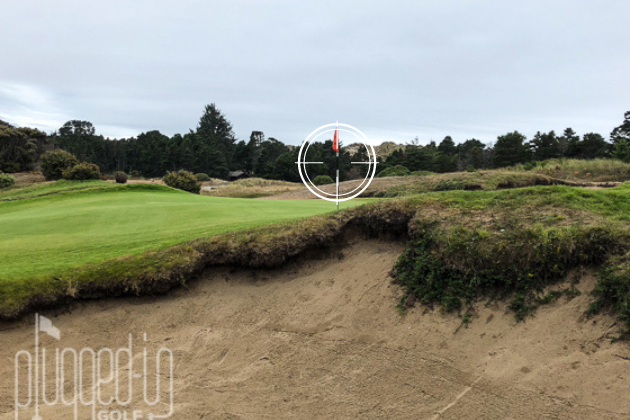
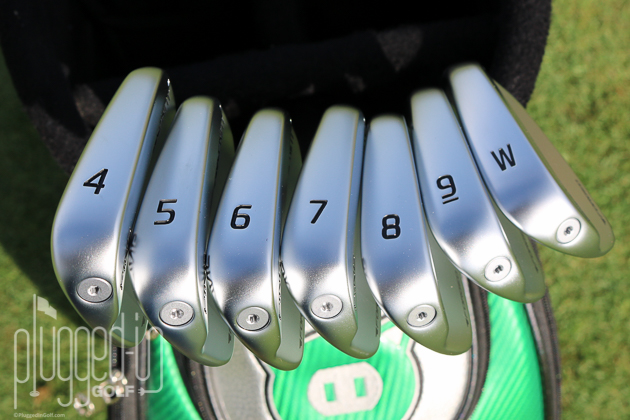





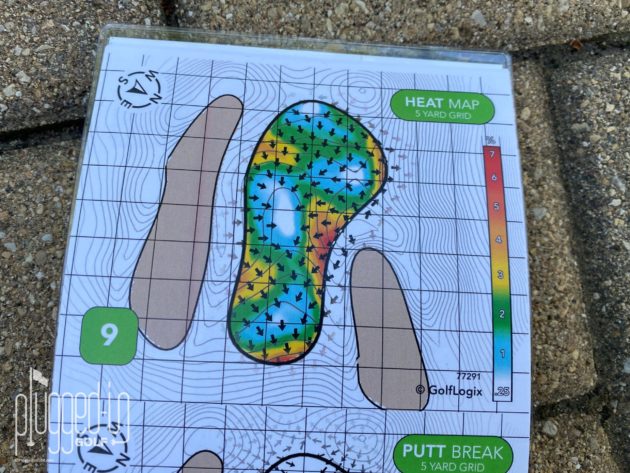
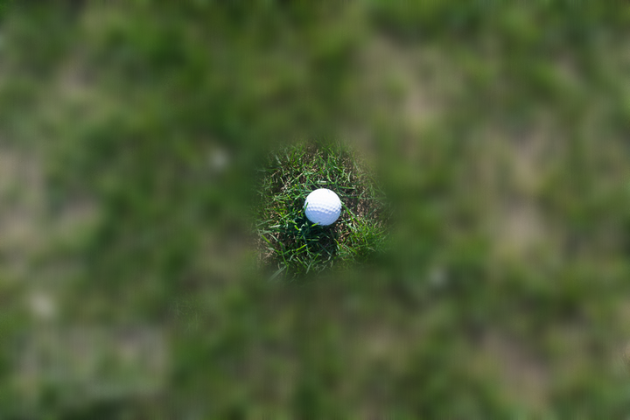

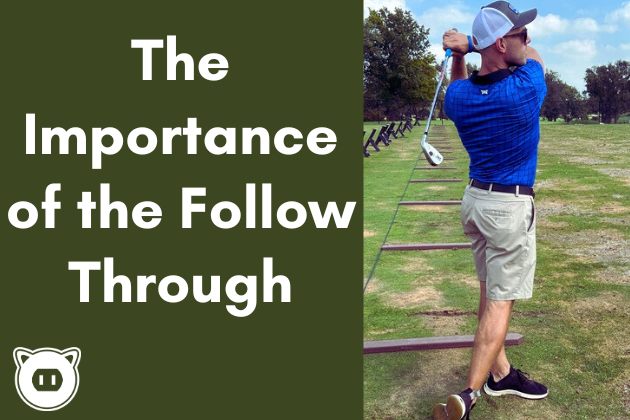
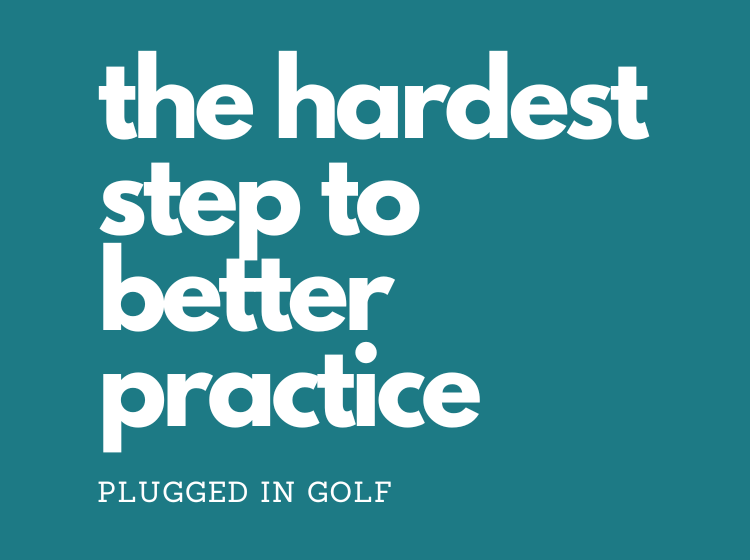









26 Comments
Excellent posting Matt – I agree with each and every one of your commandments. TW said a long time ago, aim for the center of greens and putt to the corners. even a 4 hdcp such as me sees better results from just that lone. May not make as many birdies but very few 3-putts.
Thank you for this…
Many good reminders here.
Focus is my main problem as I usually play 14-15 good holes and the other 3-4 are very bad ,what is the best way to overcome this?
Paul,
What exactly happens on those 3-4 bad holes?
-Matt
#8 – Thou Shalt Play Thine Own Game gets me in trouble every time. I need to learn how to deal with the guy who drives the cart looking for his ball for 10 minutes then only leaves me 30 seconds to drive to mine because the group behind us is waiting. There’s been a couple like that and most times I’ll just hop out and walk over to my ball with a couple of clubs. Unfortunately the anger creeps in after this.
Scott,
All of these are definitely easier said than done. And it can be tough playing with strangers, especially if they’re being inconsiderate. It’s a nice extra benefit to being a walker – I’m less affected by the other people in my group.
Best,
Matt
If you are looking to lower your scores, this is the best article I’ve seen in a long time. And to those who say they don’t care about their scores, I know they would enjoy their rounds so much more.
Thanks!
Great reminders! Also don’t be too proud to play it forward when in the drought doldrums. It will take pressure off and make those approaches much easier to make.
Matt, what course is that on #5? Thx!
Sheep Ranch.
Great reading, sometimes you need that outside perspective to take you back to the reality of your own game. It’s hard enough as it is, but you still need to block out the 3 professionals playing with you that are 18-25 hdcp.
Great article Matt !
I listened to the podcast too, but your article is way better than my poor notes. I also love all the links you added. This is going to take me hours to lower my score !
Keep up the great work.
Great advice. Thanks for putting this out there.
Great article Matt. I agree with each point as a sit and read them! Now to bring them to the course.
Matt, your “Breaking 100” article from several years ago (before shot tracking had completely seeped down from the pro level) argues leaving the driver and woods at home in favor of a 7-iron or so. Do you think that still applies to high handicappers trying to break 100 on a consistent basis? How much does that change for those trying to break 90? Thanks much.
Gil,
All of the “Breaking” articles are specifically about shooting 1 less than the posted number. If you want to score your best, you need to hit driver. This applies to all levels of players. You cannot give up substantial distance – which you do every time you hit anything other than driver – and expect to score better. I hope that clarifies things.
Best,
Matt
Update: I was playing tennis yesterday and an analogy came to me that might be helpful. If you’re playing against a weak opponent in tennis, you can win a lot of games by simply getting the ball over the net and letting them make mistakes. That’s the equivalent of hitting 7I off the tee. The problem with this strategy is that you will never beat a decent or strong player – you’re putting a very low ceiling on your game. Hitting driver (attempting to hit harder, higher quality shots, in the tennis analogy) does introduce the possibility of errors and higher scores (losses to weak opponents), but ultimately you need to learn to do it if you want to become a good player.
I broke 40 (39) for 9 holes last week using only a 7 and 9 irons, a wedge and my putter. I started off the season wanting to break 45. It helps when you don’t lose any balls, or hit OB’s, and no 3-putts. Thank you for your help.
Ferrell,
Congrats! Huge accomplishment!
-Matt
Thanks, great advice!
The article and podcast were both great. Listening to your game improvement oriented podcasts has been a big help for me. How many rounds would one need to play to benefit from shot tracking? My goal is to play 8-10 rounds per year, and I wonder if that would be enough to collect meaningful data for shot tracking. Thanks!
George,
Thank you!
I think you start to see meaningful data after about 5 rounds. Depending on the course(s) you play and the variety of tee boxes, you may need more to get reliable data on every club’s distance, but you’ll get some good big picture data pretty quickly.
Best,
Matt
Matt, great article – already sent to all my buds (a few of whom are ‘stop hitting driver’ and ‘play smart – always layup…’ :-)
Thank you Matt ,your very professional list is perfect, we will definitely save some shots.
Greetings from Rimini -Italy
First time reading your opinions? Great info a lot to think about thanks will put some of it to use
Yep; Age does come into Play. Finally, have moved up on Tees.
Playing Better; Smiling More; & sayin’ AH CHING MORE!!
Getting “Old” has it’s Advantages!!